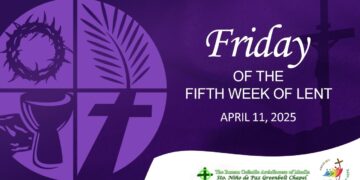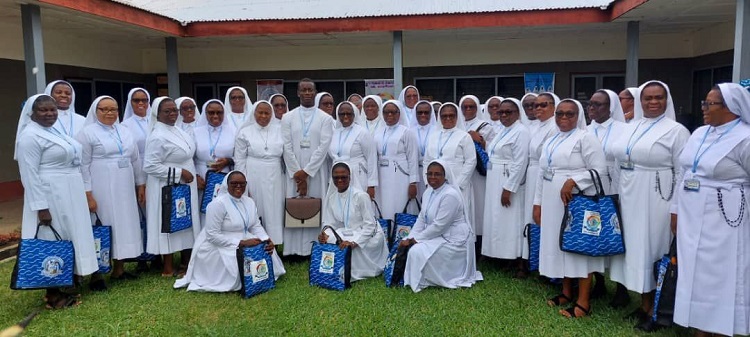The Congregation of the Handmaids of the Holy Child Jesus (HHCJ) is an international congregation that was founded by Mother Mary Charles Magdalen Walker (Servant of God), an Irish of Charity of the Irish Sisters of Charity. (now known as Religious Sisters of Charity), who came to Nigeria in 1923 at the invitation of Bishop Joseph Shanahan, CSSp of the Vicariate of Southern Nigeria.
She came to help in the work of Evangelization and most especially in the area of women’s education. Mother Mary Charles lived out the preaching of being all things to all people as she engaged in any ministry that would uplift the standard of living of the people she served. She was an educator, medical personnel, a catechist, and a social worker.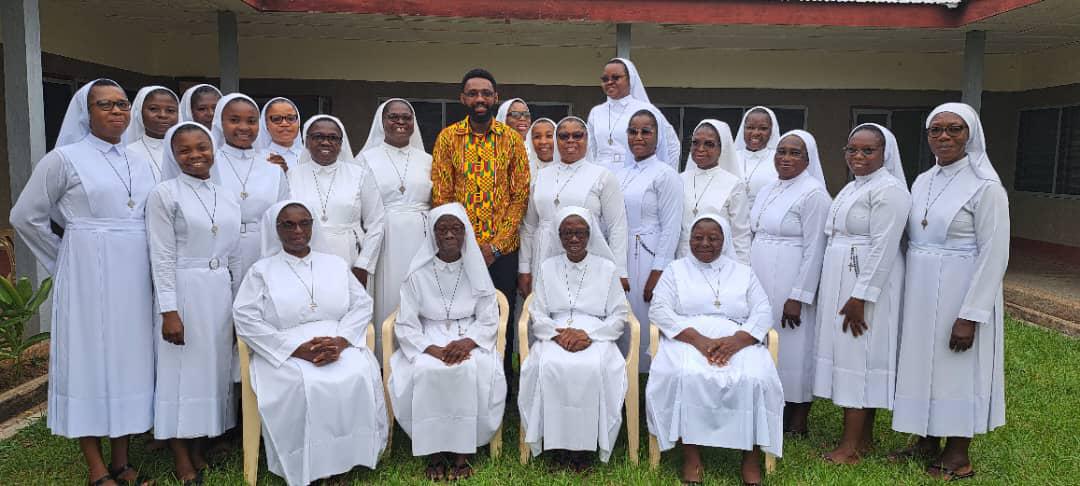
Her desire for an indigenous Religious Congregation was fulfilled when four of the young women she taught in St. Joseph’s Convent School, Calabar, Nigeria, expressed the desire to become like her. On January 15, 1931, these four women: Lucy Williams – Sister Mary St. John from Limbe, Cameroon; Kathleen Bassey – Sister Mary Ignatia from Calabar, Nigeria; Agnes Ugoaru – Sister Mary Aloysia from Umuahia, Nigeria and Christiana Waturuocha – Sister Mary Gertrude from Mbaise, Nigeria, were received as postulants and she gave the name Handmaids of the Holy Child Jesus to her new group.
The cradle of the Congregation is Calabar in Nigeria. These foundation members from the onset nursed and sustained the Congregation’s International and Inter-ethnic characteristics, as one was from Cameroon and the last three, from Nigeria, but different ethnic groups and their cherished charism of “All-embracing Charity”.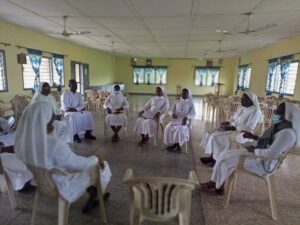
The Congregation was canonically erected in April 1937 through Bishop James Moynah, SPS, the Prefect of Calabar Prefecture, while the Society of the Holy Child Jesus guided the formation and growth of the young Congregation. The First Religious Profession of Vows took place on the 21st of April 1940.
The Congregation took over Self-Governance on 28th December 1959 with Mother Mary Gertrude Waturuocha, HHCJ, one of the foundation members, as the first Superior General of the Congregation and was granted “Decretum Laudis” (Decree of Praise) by His Holiness, Pope Paul VI, elevating it to a Congregation of Pontifical Right, on 29th February 1971. Since then, 28th December is celebrated annually as the autonomy day and a family feast for the HHCJs.
Its international and inter-ethnic nature continues as members are drawn from all parts of Nigeria, Cameroon, Togo, Ghana, Sierra Leone, England, and Kenya. Presently, the Congregation has houses in Nigeria, Ghana, Cameroon, Togo, Sierra Leone, Kenya, Tanzania, Italy, Germany, the United Kingdom, the United States of America, Canada, and Grenada.
As a result of its growth in numerical strength and geographical spread, the 7th General Chapter of the Congregation (8th – 26th March, 1996) mandated that the Congregation be divided into Provinces for effective administration and Apostolic Ministry. Consequently, four Provinces (three in Nigeria and one in Ghana) were created as follows: South Eastern Province, Ghana Province, Central Eastern Province, and North Western Province.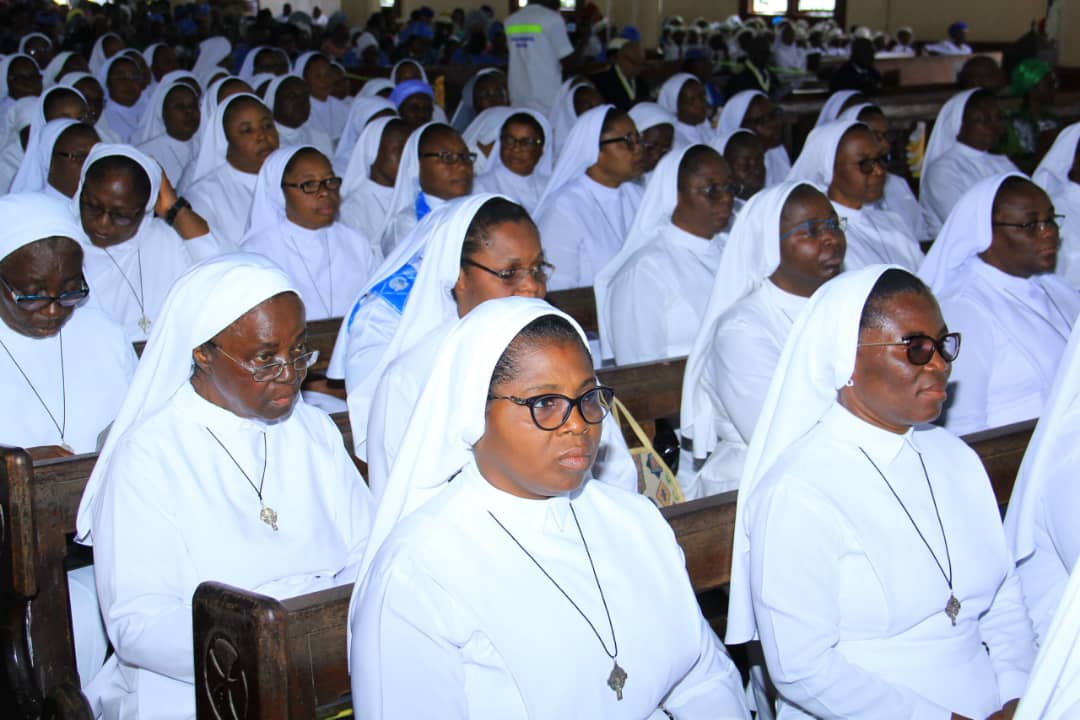
At the 9th General Chapter (1st – 18th March, 2008) Kenya Region was created. The Generalate of the Handmaids of the Holy Child Jesus, which is the principal house (Administrative Headquarters) of the Congregation, is in Ifuho, Ikot Ekpene Catholic Diocese, Akwa Ibom State, Nigeria.
The Central Leadership of the Congregation is led by an elected Superior General and Leadership Team. The Ministry of the Leadership Team relies solely on the inspiration of the Holy Spirit and the example of Jesus, the servant leader, for guidance. They serve to promote love, peace, and justice.
HHCJ Charism – “All Embracing Charity”
Motto– Love and Service
Vision Statement-“Transformation of our communities and the world in Christ”.
We pledge to transform ourselves individually, assist in transforming one another, because we believe that once we can do this, the world will be transformed through us.
Mission Statement-“Faithful to Gospel values, the charism of our foundress and attentive to the signs of the times. We, the Handmaids of the Holy Child Jesus, commit ourselves to the transformation of lives through our prophetic witness of vowed life, community living, participatory leadership, and apostolic ministry, with a special option for the poor, women, and children.
Just like our foundress, we are passionate about service, service in love, especially to the poor, women, and children. In our different apostolates, each Handmaid strives daily to continue the life of our foundress by committed caregiving in education, medical, pastoral, and social work in tune with the signs of the times.
Core Values-
- Simplicity, Commitment, Loyalty, Justice, Respect, Generosity, Humility, and Unity all abound in love and service.
- The model and patronage of our religious consecration is the Blessed Virgin Mary, who first declared:
- “I am the Handmaid of the Lord, be it done unto me according to your word”. (LK 1:38)
Brief History of Mother Mary Charles Magdalen Walker, RSC (Servant of God)

Foundress of The Congregation of the Handmaids of the Holy Child Jesus Religious Vocation and Publications
She was admitted into the Congregation of the Religious Sisters of Charity in Ireland in 1901, and in 1904, she made her first religious profession of vows. She was later appointed teacher and head-teacher in many schools in Ireland for twenty years. During this time, she was able to author two books: Caritas Christi Urget Nos (the Charity of Christ Urges Us) and the Catechism Notes.
These books were used for many years in schools in Ireland, England, and Australia. The books also helped her in education, formation, evangelization, and Christianization in Southern Nigeria. Besides, she also published many articles in various European Journals. One of her articles worthy of note is “Education of Girls in Southern Nigeria”, published in the International Review of the Missions.
Appeal to Become a Missionary in Africa
In 1919, following the withdrawal of the Sisters of St. Joseph of Cluny, a French Religious Institute, from the Vicariate of Southern Nigeria, Bishop Joseph Shanahan CSSp. made a special appeal to the Religious Sisters of Charity, Dublin, for Sisters, stating that if sisters fail to render assistance, “the evangelization of women and children would forever remain unattended to, as priests were unable to carry out this ministry.” This appeal lingered on with much discernment for many years.
Eventually, Mother Mary Charles Magdalen Walker had to write to Pope Pius XI, requesting permission to work among the blacks of the Vicariate of Southern Nigeria. This request was granted on the 11th of June, 1923. Consequently, she left for the missions in Nigeria. She arrived in Calabar on the 3rd of October, 1923. On arrival, she was given a warm reception at the beach by the people of Calabar despite the torrents of rain.
Missionary Activities
Mother Mary Charles Walker’s first assignment was to teach in St Joseph Girls’ School under Miss M. Martin, who was then in charge of administration in the school. Sister Magdalen Walker (as she was known) took over the management of St. Joseph Girls’ School at Calabar in 1924, which at the time was at the point of being closed by the Government because of lack of teachers and poor management. With this, she quickly adopted the student-teacher system to meet the challenge of insufficient teachers and introduced the Montessori Method of education.
These innovations led to the achievement of a high standard. This prompted Bishop Joseph Shanahan, CSSp, on the 19th of November, 1927, to write a congratulatory and appreciation letter to her. She carried out many educational and humanitarian works, including the adoption of the Montessori Method in schools, literacy of women and training of girls, opening of vocational schools, training of teachers, Provision of homes for twins and their ostracized mothers, Pastoral works, catechism classes, and medical services which are discussed below:
The Montessori Method
Training of Girls and Women’s Literacy
Mother Mary Charles Magdalen Walker, our Foundress, operated the Montessori Method in St. Joseph Girls’ School, Calabar, and clearly stated that the Montessori Method was different from kindergarten since it develops different qualities in children, trains the whole child through learning skills. She organized the school so well with the Montessori Method that in 1926, it was classified A+ by Government Inspectors. About the training of girls, Mother said, “I want to take hold of a great multitude of our girls and ground them in the elements of Christianity and civilized womanhood” (MCMW) as found in her article: “Education of Girls in Southern Nigeria.” Here, she explained the need for training in self-control, earnestness, reliability, and responsibility. She said in another place, “The Native girl is capable of excelling in every virtue; only time, patience, and opportunity are required.”
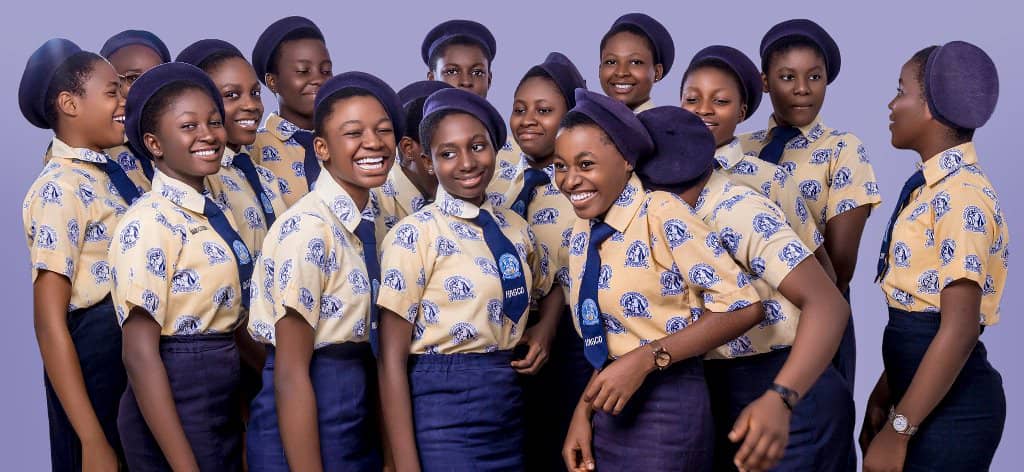
She enlarged the curriculum of her schools from the three “R”s to include Domestic Science, Home Management, Needle Work, and Crafts for women with the aim to provide a comprehensive education with firm character formation. Mother planned and established a vocational school for girls who had passed school age and those preparing for marriage. Their curriculum included Horticulture, Domestic Science, Crafts, Needle Work, and Raffia Work.
Mother made literacy available to women not only in Calabar but also in other towns and villages of the Vicariate. As such, she established convent schools at Asong, Ndon Ebom, Eman Uruan, Ikot Ekpenyong, Ikot Ansa, Ifuho, Essene, and Edem Ekpat.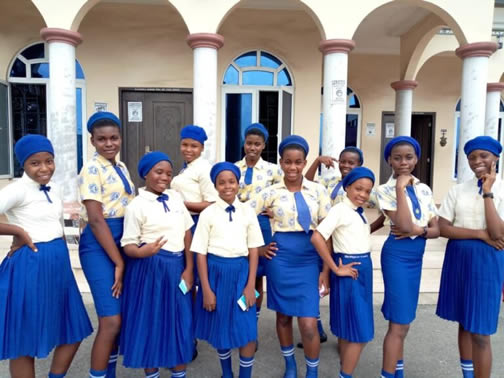
Training of Teachers
“Every Teacher is a Catechist and Apostle” (MCMW). One of the greatest challenges that faced the Vicariate of Southern Nigeria was the lack of female teachers. Mother opened a teacher training college in Calabar to train women to become qualified teachers. Hence, she wrote in 1929, “there is a large school in Calabar which will be a training school for teachers of the whole Efik and Ibibio land.”
Social Work
Mother arrived at the time when twins and their mothers were ostracised from their communities. Through her love and compassion, she accepted them as children of God and provided homes for them.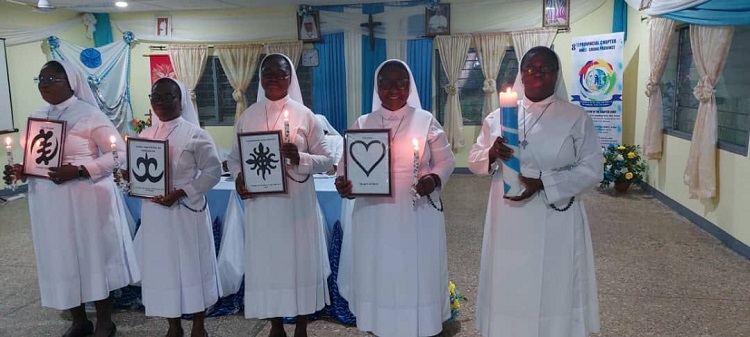
Pastoral Work
Through pastoral works and teaching of catechism, Mother was able to reach out to evangelize and bring Christianity to women, children, and others who came in contact with her.
Medical Services
Mother arrived at the time when twins and their mothers were ostracized from their communities. Through her love and compassion, she accepted them as children of God and provided homes for them.
Mother Mary Charles Magdalen Walker – The Foundress of the Congregation of the Handmaids of The Holy Child Jesus (15th January, 1931)
Mother Mary Charles Magdalen Walker, RSC, had a unique grace to inspire and nurture religious vocation. This was manifested in her founding of the first native sisterhood in Nigeria with four of her girls. Thus, on 15th January 1931, after five years of aspirancy and formation, the first indigenous Congregation in West Africa, named Handmaids of the Holy Child Jesus, was founded by Mother Mary Charles Magdalen Walker, RSC.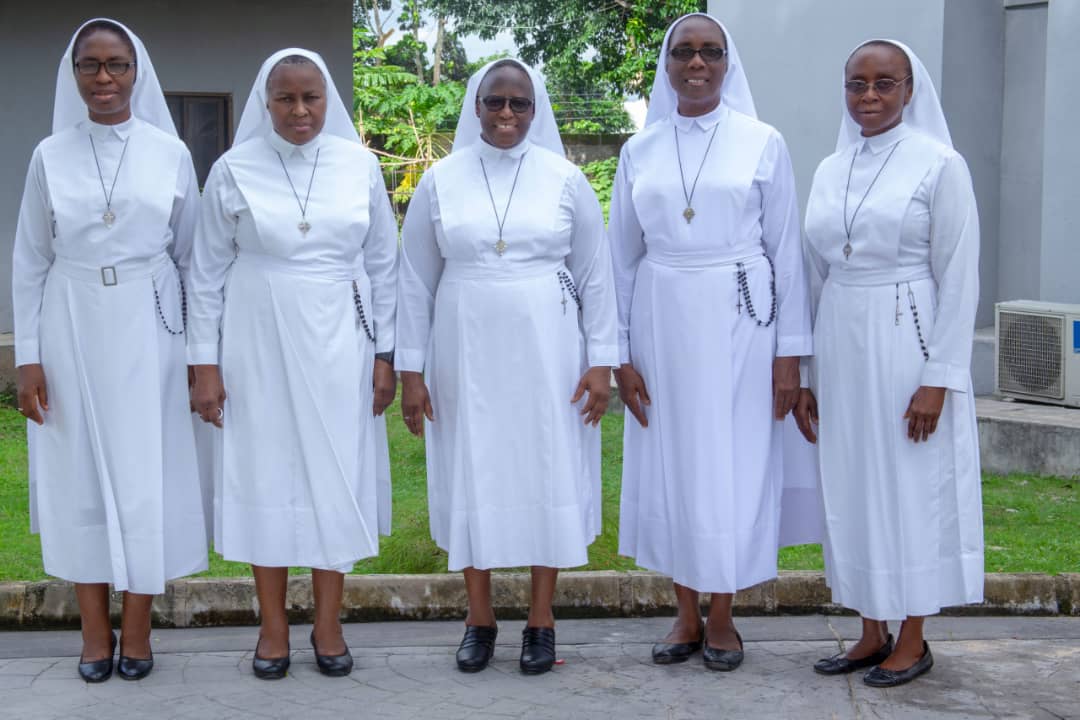
THE LAST JOURNEY
By God’s special grace, Mother worked in Southern Nigeria for ten uninterrupted years. Later, providence took her to Zambia, where she continued her work of evangelization. She died on the 27th of February, 1966. Mother had wished to live, work, and die in Nigeria. Hence, her daughters, the Handmaids of the Holy Child Jesus, went to Zambia in 1981 and exhumed her remains. She was thereby laid to rest at Mother House of the Handmaids of the Holy Child Jesus in No. 130 Calabar Road, Calabar, Cross River State.
Choice and colour of Habit for the Handmaids of the Holy Child Jesus, HHCJ
Wikipedia defines the habit as a distinctive garment of a man or woman religious, its use dating back to the beginnings of monasticism. The habit was prescribed for religious by the Second Vatican Council: “The religious habit, which is an outward mark of consecration to God, should be simple and modest, poor and at the same time becoming.
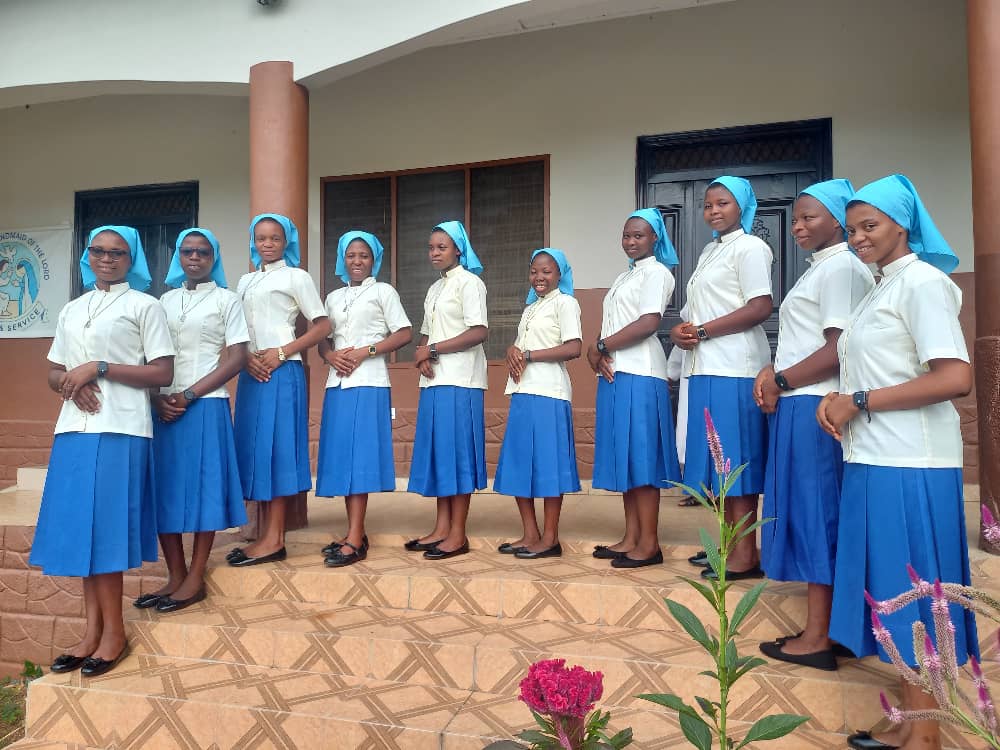
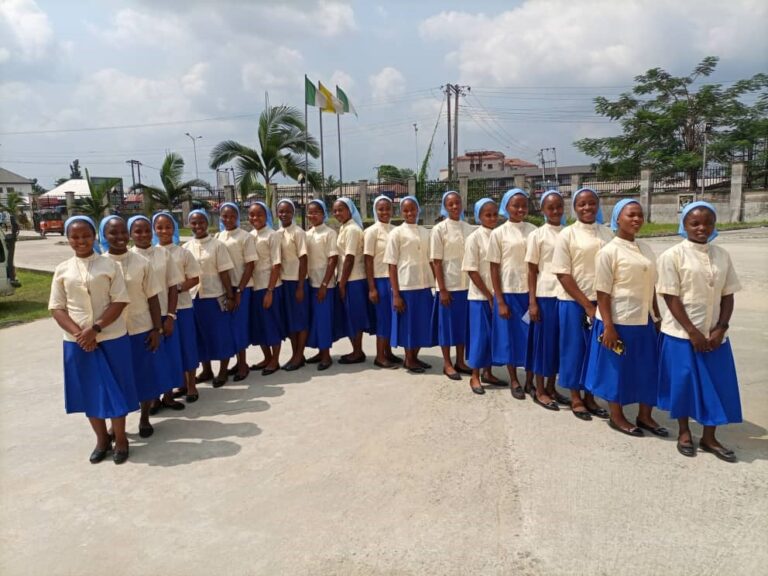
Religious men and women wear different types and colours of habit, and each congregation has a symbolic meaning for their habits. Choice of habit: The colors of the HHCJ congregation are white and grey/ash.
The white habit, just like many congregations, has been the most official color of the habit for the congregation. White symbolizes purity and spotlessness. As consecrated women, we are consecrated to God. White is a bridal color, and as spouses of the spotless lamb, we wear it to delight our spouse and as a reminder to preserve that dignity and the privilege of being chosen by God. The colour white also denotes purity, faithfulness, beauty, and fidelity. It reminds us to keep ourselves unstained as we hope to reunite with our spouse on the last day.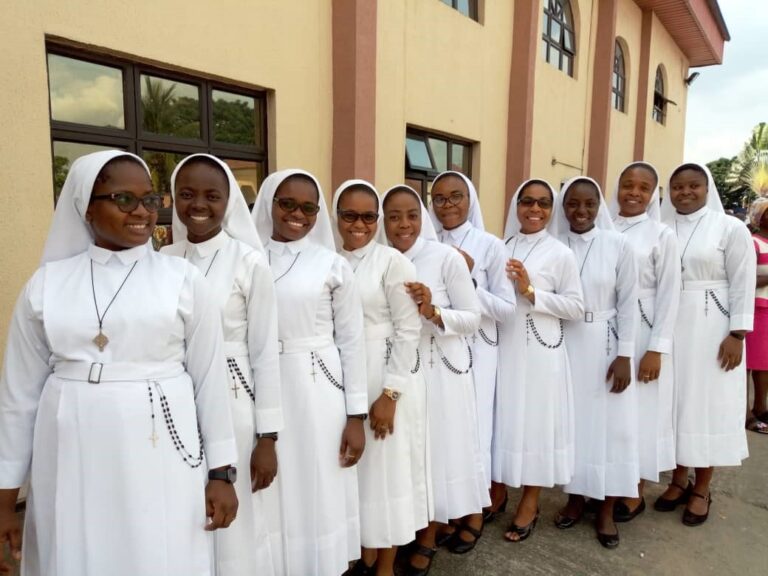
The HHCJ has the grey or the ash color as one of the colors of our habit. The grey is mostly worn when we are travelling or engaged in our daily work. It is a sign of hard work, simplicity, generous and loving service to God in our neighbors. The color grey or ash connotes humility, humanness, and nothingness.
HHCJs in our motto are called to love and serve. We are servants who serve in humility while pleasing the master. It is also a sign of dignity and dedication to service. When in a gray habit, we do not restrain ourselves from any menial work but rather plunge into it in love and humble service to both rich and poor, the child, youth, aged, sick, and marginalized, without counting the cost. We’re at the service of all.
These colours of our habits are portrayed in our core values, which are simplicity, commitment, faithfulness, humility, loyalty, justice, respect, and generosity.
By Sr. Emmanuella Dakurah, HHCJ (Researched from Congregational Archives)



